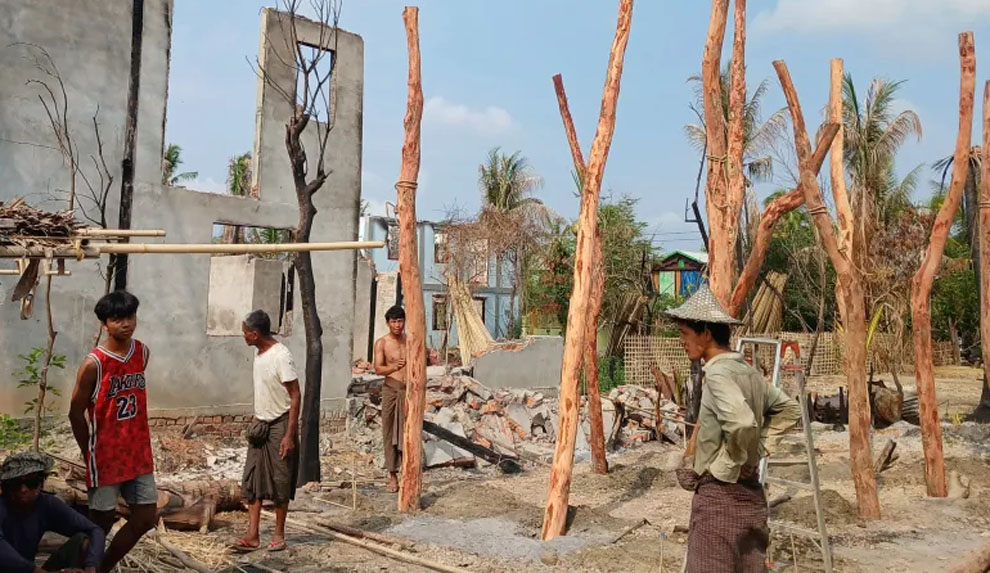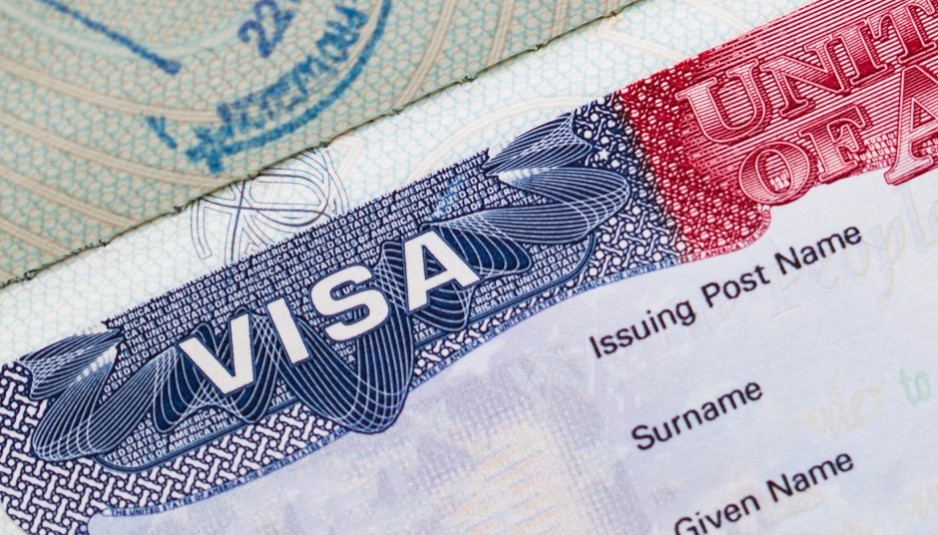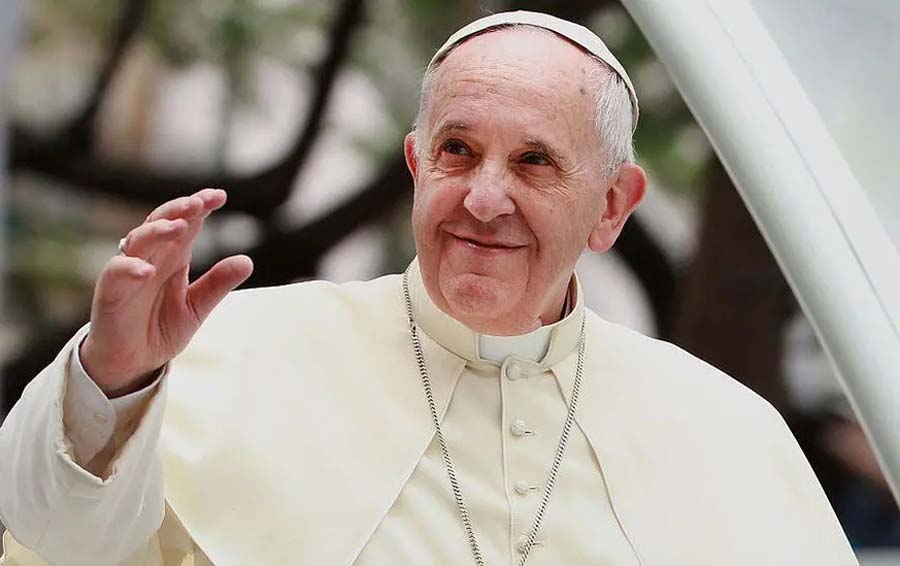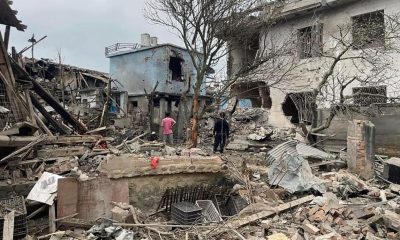International
Young men trapped between war and conscription in Myanmar’s Rakhine

Young men trapped between war and conscription in Myanmar’s Rakhine
Since war resumed in his native Rakhine State last November, Thura Maung has seen his options narrow.
The 18-year-old, from the state’s ethnic Rakhine majority, first fled his home in the coastal town of Myebon in December, when clashes between the military and autonomy-seeking Arakha Army – formerly known as the Arakan Army – seemed imminent.
He and his family escaped by boat, travelling along river inlets at night to avoid being seen by the military. They returned a few days later, but fled twice more over the following months as the fighting escalated.
By February, the military and AA were battling for control over Myebon, and Thura Maung could hear shelling from the village where he had taken shelter. The military had also blocked the movement of goods and shut down the internet in areas affected by the conflict, leaving his family struggling to make ends meet.
With his university effectively closed due to the fighting, he felt his dreams slipping away. “There were no opportunities for my life to develop, and I saw no future,” he said.
It’s a feeling shared by Zubair, an ethnic Rohingya from Rakhine State’s northern Maungdaw township. The 24-year-old was doing an internship with a civil society organisation focused on peacebuilding when the fighting broke out and his office closed.
Soon, he was running from the war as well as a military conscription drive targeting Rohingya men. “We weren’t able to stay at home, go to work or even sleep on time,” he said. “Time that we could’ve spent working on our futures was wasted.”
Zubair and Thura Maung are part of a new generation of young people across Myanmar whose lives have been turned upside down by the 2021 military coup. In Rakhine State, people had already lived through years of communal conflict and a brutal 2017 military crackdown on the mostly Muslim Rohingya. The escalating violence between the military and AA has only made matters worse, according to Karen Simbulan, a human rights lawyer specialising in conflict sensitivity in Rakhine.
READ ALSO:
- Varsities workers threaten fresh industrial action over withheld salaries
- JUST IN: Court quashes dethronement of Emir Bayero, others
- BREAKING: Court scraps Ondo LCDAs
“With the most recent renewed fighting and the looming threat of forced conscription, many who had persisted and stayed in Rakhine despite everything are seeing their futures taken away from them,” she said. “Many are taking significant risks to flee to safety, often putting themselves in highly vulnerable situations just to survive.”
Al Jazeera spoke with four young men from Rakhine State about the effects of the conflict on their lives. They have all been given pseudonyms to protect their safety.
‘Stirring up communal tensions’
The renewed fighting is the latest crisis to hit Rakhine State, home to Daingnet, Mro, Khami, Kaman, Maramagyi, Chin and Hindu minorities as well as the Rohingya, and the mostly Buddhist Rakhine majority. A category four cyclone hit the region last May, following successive waves of violence in the decade leading up to the coup.
In 2012, mobs of ethnic Rakhine and Rohingya people attacked each other with sticks and knives and burned each other’s homes, leaving dozens dead and some 140,000 forced from their homes. Afterwards, the military imposed tough restrictions on Rohingyas’ movement and access to services, while continuing to deny them citizenship under a discriminatory 1982 law.
The situation deteriorated dramatically in 2016 and 2017 when the military killed thousands of Rohingya civilians and committed widespread sexual violence and arson following attacks on military outposts by a Rohingya armed group. Its “clearance operations” in northern Rakhine State drove more than 750,000 people into neighbouring Bangladesh, and the crackdown is the subject of continuing genocide proceedings at the International Court of Justice.
The AA stepped up its fight for autonomy in late 2018; over the next two years, Rakhine State endured some of the most intense armed clashes seen in Myanmar in decades. The military also indiscriminately bombed and shelled civilian areas, committing what Amnesty International identified as war crimes.
The military and AA reached an informal ceasefire in November 2020, just three months before the generals seized power from the elected government of Aung San Suu Kyi. Weeks later, the military cracked down on peaceful protests across Myanmar with gunfire and arrests. An armed uprising soon followed; by mid-2021, all-out war had erupted across the country.
Existing ethnic armed organisations trained and fought alongside anti-coup People’s Defence Forces (PDF), but the AA mostly stayed out of the fray, instead focusing on establishing governance mechanisms in its territory through its administrative wing, the United League of Arakan.
That changed last October, when the AA joined ethnic armed groups fighting on Myanmar’s eastern border with China to launch Operation 1027 declaring their intent to eradicate “oppressive military dictatorship”. Within weeks, they had seized strategic territory and other resistance groups were launching new offensives across the country. On November 13, the AA brought the war to Rakhine soil with coordinated attacks on military positions.
READ ALSO:
- 1 killed, 2 policemen injured as hoodlums unleash mayhem in Kano
- Court remands 11 persons over alleged cultism, robbery in Lagos
- Binance: India slams heavy fine on crypto firm for non-compliance
The AA and its allies have since driven out the military from most of central and northern Rakhine State as well as Paletwa township in neighbouring Chin State. Following tactics it has long used to punish communities harbouring armed resistance, the military has retaliated with full-scale attacks on AA-controlled and contested areas by air, land and water while cutting off transit routes, communication channels and access to medical care for entire populations.
Hundreds of civilians have been injured or lost their lives and more than 185,000 people displaced across Rakhine State and Paletwa since November out of more than three million that the United Nations says have been displaced across the country, mostly as a result of the coup.
Through its forced conscription of Rohingya men as well as by demanding they protest against the AA, the military is also deliberately working to threaten years of fragile progress towards reconciliation between Rakhine and Rohingya communities, according to Simbulan, the conflict sensitivity specialist.
“The military is once again resorting to stirring up communal tensions because it is desperately losing ground in Rakhine,” she said. “As the expected de facto authority in Rakhine, the AA needs to heed its own words that this is a military tactic to divide communities, and not fall into the trap the military has set.”
Fear of conscription
Zubair, in Maungdaw, said that the conflict and military conscription drive left him feeling like the military was attempting to “destroy our Rohingya youth … from every angle”.
Since November, he has repeatedly been forced to flee his home due to the conflict. “Our village was attacked a lot, so we moved to another village which was less attacked,” he said. By February, he was also running from military conscription. Human Rights Watch reported in April that the military had used methods including false offers of citizenship, nighttime raids and abduction at gunpoint to conscript at least 1,000 Rohingya men, some of whom it sent to fight on the front lines against the AA.
In Maungdaw, Zubair said he had been unable to sleep since military soldiers took his neighbours from their home one night in March because he was fearful he might be next. The military was also blocking the roads between villages, leaving him and other young people with few places to go. “We ran inside the village,” said Zubair. “When we heard that [soldiers] were coming from one direction, we ran in another.”
Then, the military ordered the Maungdaw hospital to close, leaving Zubair’s father, who needs to use an inhaler because of a respiratory disease, unable to access medical care.
By April, heavy fighting between the military and AA had reached Rakhine State’s northern townships, alongside a series of devastating arson attacks across neighbouring Buthidaung township whose perpetrator remains disputed.
With a fight for control over Maungdaw looming, Zubair and his parents sneaked across the Naf river into Bangladesh one night at the end of May.
Now staying in the world’s largest refugee camp, Zubair rarely leaves his shelter, fearing that he could be robbed by other camp residents or arrested by Bangladeshi police, who sent back more than 300 people between February and April, according to the research and advocacy group Fortify Rights.
READ ALSO:
- 34 die, scores hospitalised after taking alcohol in India
- JUST IN: Lagos: 21 people die in fresh 401 cholera cases
- Court postpones ruling on Kano Emirate tussle
“I need to be cautious every time I go outside,” he told Al Jazeera.
After escaping to nearby villages, Thura Maung, the Rakhine youth, also left the state due to the conflict. On February 9, he travelled by boat for two days to the state capital of Sittwe, and then boarded a plane bound for Myanmar’s largest city of Yangon.
He landed to find a city in chaos. While he was in transit, the military had announced plans to activate conscription from April, prompting a mass exodus from areas under its control. Thura Maung, who had planned to enrol in language classes in Yangon, could not find a course accepting new students and also feared conscription himself. So a week later, he began the trip back to Myebon, which had just been captured by the AA.
As soon as his flight touched down in Sittwe, however, he was arrested at the airport along with the other passengers on his flight. Held without charge at a Buddhist religious centre, military soldiers took his mugshot, interrogated him and searched through his phone.
He is among hundreds of people who have been detained by the military while travelling to or within Rakhine State since February. In March, the military also ordered travel agents and bus operators to stop issuing tickets to Rakhine State natives.
While these actions may have been intended to stop the flow of information and recruits to the AA, for Thura Maung, they had the opposite effect. Nearly a week after he was arrested, he sneaked away and headed towards an AA camp. “I felt lost,” he said. “I attempted to enter the AA without letting my parents know, because I thought it was the only certain thing I could do.”
A relative talked him out of it, however; now back in Myebon, where he is safe from military conscription because the AA controls the town, he still fears he could become the next victim of the military’s attacks. “I feel safer living in Myebon, but I still have to worry about air strikes,” he said.
‘Survival is my priority’
Tun Tun Win, a 24-year-old ethnic Rakhine, was also arrested at Sittwe airport. He had been attending language classes in Yangon when fighting broke out between the military and AA; although he had initially stayed in the city, he changed his plans in February. “Although there is ongoing conflict in Rakhine, I felt more secure living with my family than living alone in Yangon under the conscription law,” he said.
READ ALSO:
- Presidency responds to Aisha Yesufu’s allegations regarding Tinubu in S’Africa
- Negotiator killed after delivering N16m ransom, 3 bikes to bandits in Kaduna
- Arsenal ditches Osimhen for Girona’s Dovbyk as NFF denies banning Napoli strike
Fleeing one danger, however, he was soon caught up in another. Like Thura Maung, soldiers took him away at the airport and interrogated him for several days at a Buddhist religious centre before he managed to sneak away. Now back home in Myebon, he faces a new set of struggles. “Currently, survival has become my priority rather than pursuing my ambition and plans,” he said.
Arkar Htet, a 27-year-old ethnic Rakhine from a village on the outskirts of Sittwe, also saw his plans fall apart after the conflict broke out. He was running an online delivery service and working as a dance instructor but stopped both after the military imposed a nighttime curfew and stepped up its surveillance and arrests. “I feared going outside even in the afternoon,” he said.
But even at home, he did not feel safe. As the military and AA battled for control over the town of Pauktaw, 30 kilometres (19 miles) northeast, military shells whizzed over his roof, as well as jet fighters on their way to bomb the town.
By January, the AA controlled Pauktaw, but the military had burned most of it down. As the fighting shifted to areas around Sittwe, Arkar Htet and his family fled by boat on February 29. Stray fire injured a passenger on the way; back in the city, about a dozen people died when shelling hit a portside market.
Arkar Htet and his family managed to reach a village under the AA’s control in Ponnagyun township, and in early April, he told Al Jazeera that he felt “70 percent safe”.
Less than two months later, on May 29 and 30, the military raided Byaing Phyu village, just a few kilometres from the village from which Arkar Htet had fled. According to the AA, military forces killed 72 civilians and raped three women; the military has denied the claims.
Then on June 1, the military bombed a village in Ponnagyun township next to the one where Arkar Htet had taken shelter, killing two civilians. Al Jazeera has been unable to get in touch with him since.
Young men trapped between war and conscription in Myanmar’s Rakhine
International
US releases 41 countries granted 90-day entry without visas (full list)

US releases 41 countries granted 90-day entry without visas (full list)
Citizens from 43 countries can now visit the United States for up to 90 days without a visa, thanks to the Visa Waiver Program (VWP).
However, travellers must meet specific requirements and obtain approval through the Electronic System for Travel Authorization (ESTA) before boarding their flight.
ESTA is an online system managed by US Customs and Border Protection that determines eligibility for visa-free travel under the VWP. It’s important to note that the stay must not exceed 90 days, and travelers must apply for ESTA in advance.
The VWP covers travel for tourism or business purposes. Participating countries include the United Kingdom, Australia, France, Germany, Japan, South Korea, and Singapore, among others. Countries like Nigeria and India are not part of the program.
Even if you’re a citizen of a VWP country, you will not qualify for ESTA if:
You have visited or were present in North Korea, Iran, Iraq, Libya, Somalia, Sudan, Syria, or Yemen on or after March 1, 2011.
READ ALSO:
- 2025 UTME: Muslim students kick as JAMB officials seize candidates’ hijab at Caleb Varsity UTME centre
- Pep Guardiola, wife to ‘give marriage a second chance’ after Barcelona reconciliation meeting
- Groom cancels wedding, marries another lady same date, venue
1. You have visited or were present in Cuba on or after January 12, 2021.
2. You hold dual nationality with Cuba, North Korea, Iran, Iraq, Sudan, or Syria.
3. If any of the above applies to you, you must apply for a standard B-1/B-2 visitor visa instead of using the VWP.
1. Andorra
2. Australia
3. Austria
4. Belgium
5. Brunei
6. Chile
7. Croatia
8. Czech Republic
9. Denmark
10. Estonia
11. Finland
12. France
13. Germany
14. Greece
15. Hungary
16. Iceland
17. Ireland
18. Israel
19. Italy
20. Japan
21. Latvia
22. Liechtenstein
23. Lithuania
24. Luxembourg
25. Malta
26. Monaco
27. Netherlands
28. New Zealand
29. Norway
30. Poland
31. Portugal
32. Qatar
33. Republic of Korea (South Korea)
34. Romania
35. San Marino
36. Singapore
37. Slovakia
38. Slovenia
39. Spain
40. Sweden
41. Switzerland
42. Taiwan
43. United Kingdom
US releases 41 countries granted 90-day entry without visas (full list)
International
Thousands pay tributes as Pope Francis’ body lies in state at St. Peter’s Basilica

Thousands pay tributes as Pope Francis’ body lies in state at St. Peter’s Basilica
Vatican City was filled with the sounds of bells and heartfelt chants on Wednesday morning, as thousands of mourners gathered to honor the late Pope Francis.
In a moving and solemn procession, his simple wooden coffin was carried through St. Peter’s Square, marking the beginning of final rites for the beloved pontiff.
The procession began at the Domus Sancta Marta, the residence where Pope Francis passed away, and continued toward St. Peter’s Basilica. There, his body will lie in state until his funeral, scheduled for Saturday.
Two long lines of cardinals and Vatican officials escorted the coffin, while faithful from around the world looked on in prayer and reverence.
Dressed in a red chasuble and a white miter, with a rosary gently wrapped around his fingers, Pope Francis was honored with continuous applause as Swiss Guards solemnly accompanied the casket through the square.
Teresa Piuvano, a New Jersey resident who has been in Rome since March volunteering at Vatican events for the Jubilee year, saw Francis’ appearances on Palm Sunday and Easter Sunday. Easter, she said, “was the most special. I think he wanted to do that to say goodbye to the people because he rode around the whole square even though he was very ill.”
Inside the basilica, the pope was laid on a simple podium instead of the wooden structure, called a catafalque that has traditionally held a pope’s coffin as he lies in state. The ceremony that concluded the procession, led by Cardinal Kevin Farrell, who as camerlengo is charged with overseeing the logistics of the pope’s funeral, referred to Francis in humble terms such as “bishop” and “pastor.”
READ ALSO:
- Rivers: Tinubu set to emergency rule after meeting Fubara
- NNPCL: Protesters storm AGF office, demand probe of Mele Kyari
- Fresh herders’ attack claims 11 lives in Benue
“Dearest brothers and sisters, with great emotion we accompany the mortal remains of our Pope Francis into the Vatican basilica where he often exercised his ministry as the bishop of the church that is in Rome and as pastor of the universal church,” Farrell said in the prayer service.
After the death of Pope Emeritus Benedict XVI, Francis changed the protocol for papal funerals to streamline and simplify the procedures. The pope wanted his own funeral to reflect the life of a pastor and not of a powerful king or politician, he said in interviews.
After the ceremony, cardinals proceeded to bow one by one in front of the coffin before the mourners lined up in the square were admitted.
Nearly 20,000 people visited the basilica yesterday, according to the Vatican, which added that it would ensure that all who wish to pay their final respects to the pope have a chance by staying open after midnight if necessary.
Second General Congregation of Cardinals held in the Vatican
The second General Congregation of Cardinals began yesterday afternoon in the Synod Hall at about 5:00 PM, and ended at 6:30 PM.
According to the Holy See Press Office, 103 cardinals were present. They began the meeting with the ‘Veni, Sancte Spiritus’ prayer, and then with a prayer in suffrage of Pope Francis.
The Cardinals who were not present at Tuesday’s General Congregation were sworn in.
The programme of the Novemdiales, the ancient nine-day period of mourning for the Pope, was approved.
The next General Congregation will be today at 9:00 AM.
At the first General Congregation, held on Tuesday morning, the Cardinals decided to suspend all scheduled beatifications until the new Pope can approve them.
Moreover, in accordance with the norms of Universi Dominici Gregis, a commission of three Cardinals was selected by lot to assist the Camerlengo in the governance of the Church during the sede vacante.
These three Cardinals represent the three orders of the College of Cardinals and are replaced every three days. The first group of three Cardinals chosen was Pietro Parolin (episcopal order), Stanisław Ryłko (presbyteral order), and Fabio Baggio (diaconal order).
The Holy See Press Office noted that around 20,000 people had paid their respects to the late Pope Francis as of 7:30 PM on Wednesday evening.
Why King Charles isn’t allowed at pope’s funeral
Prince William will be traveling to the Vatican to attend the funeral of Pope Francis on behalf of the British royal family later this week. And if you’re wondering why King Charles isn’t going, he literally isn’t allowed.
Royal expert Katie Nicholl writes in Vanity Fair that King Charles “will not travel to the Vatican, in accordance with protocol and precedence which dictates that the Sovereign does not attend funerals, Buckingham Palace has confirmed.” And FYI, this isn’t the first time an heir has attended the funeral of a pope on behalf of the sovereign—back in 2005, then-Prince Charles attended Pope John Paul II’s funeral instead of Queen Elizabeth.
That said, King Charles did visit the pope just a few days before his recent passing, and he released a statement after his death.
Thousands pay tributes as Pope Francis’ body lies in state at St. Peter’s Basilica
International
UK records over 22,000 asylum-seeking Nigerians

UK records over 22,000 asylum-seeking Nigerians
The United Kingdom Home Office received 22,619 asylum petitions from Nigerian nationals between 2010 and 2024.
Nigerians accounted for one in every 30 UK asylum claims over the time, ranking 11th in the Home Office’s recently released year-end asylum and resettlement figures.
According to the Home Office, over two times as many Nigerians (2,841) requested asylum in 2024 than in 2023 (1,462).
Overall, 108,138 people applied for asylum in the UK in 2024, representing a 378 per cent increase from 2010. The majority were first-time claims by South Asian and Middle Eastern nationals.
Iran topped the chart with 75,737, perhaps pushed by the rising persecution of dissidents by the Iranian regime.
Pakistan trailed far behind with 57,621. In 2024, 10,542 Pakistanis sought asylum in the UK, prompted by post-election upheaval, rising inflation, and an increase in blasphemy cases, which human rights groups argue provide strong grounds for protection claims.
Afghanistan has received 54,363 asylum petitions since 2010. In 2024, 8,508 Afghans sought sanctuary in the United Kingdom, a development that experts suggest is a continuation of the Taliban’s ouster of the Karzai administration in 2022.
That year, 11,358 Afghans applied for asylum in the United Kingdom, with 9,710 applications the following year.
Others include Albania (50,944), Iraq (45,711), Eritrea (37,687), Syria (34,997), and Bangladesh (31,744). Asylum seekers from Bangladesh increased from 5,097 in 2023 to 7,225 in 2024. The rise corresponded with the removal of previous Prime Minister Sheikh Hasina.
READ ALSO:
- Driver crushes one-year old boy to death in Ekiti
- Bring your children to compete with mine, MC Oluomo challenges those mocking his spoken English
- Insecurity: Presidency questions push for state police, accuses govs of not doing much
Sudan and India complete the top ten, with 30,897 and 30,179, respectively.
Nigeria’s 22,619 filings are just ahead of Sri Lanka’s 22,059 and surpass Vietnam, China, and Turkey. Brazil, Kuwait, Yemen, Colombia, and Jordan were at the bottom of the list, with each providing fewer than 6,500 claims.
Analysts attribute Nigeria’s rise on the list to tough conditions such as insecurity, bandit assaults, abduction, and a collapse in household purchasing power following the naira’s devaluation in 2023.
In a conversation with our correspondent, Charles Onunaiju, Research Director, Centre for China Studies, Abuja, stated, “We face a difficulty. Nigeria is becoming unfriendly, particularly for young people with limited opportunities, and there is a desperate desire to travel overseas.
According to local reports, young professionals who previously entered the UK on skilled worker visas are increasingly hedging their bets by applying for asylum once there; others arrive irregularly via continental Europe, citing kidnapping threats and communal attacks in their affidavits.
According to the reports, in most cases, petitioners also claim political persecution under Nigeria’s wide cybercrime legislation or discrimination based on sexual orientation—both of which are protected under the Refugee Convention.
According to the Home Office’s website, an asylum seeker must demonstrate a “well-founded fear of persecution” because of their race, religion, nationality, political opinion, or membership in a certain social group.
The Home Office determines the initial decisions, and negative rulings can be challenged in the Immigration and Asylum Chamber.
In theory, the Illegal Migration Act of 2023 makes people who travel through a safe third nation inadmissible.
However, the UK government’s proposed removal process, particularly its contract with former Prime Minister Rishi Sunak to transfer claimants to Rwanda, is still enmeshed in legal obstacles.
As a result, the majority of 2024 and 2025 arrivals will continue to use the existing system.
Dr Aliyu Ilias, an Abuja-based development economist, told The PUNCH that as more Nigerians leave and stay permanently overseas, the country will have less trained labour.
He stated that with most Nigerians confronting both economic headwinds and deteriorating security at home, the British asylum route, however uncertain, still appears to offer a better prospect.
Ilias explained, “It’s definitely a cause of concern because this includes our professionals who are moving, and it takes a whole lot to train these professionals.
“In the medical sector, Nigeria subsidises a lot to get people trained. You cannot get trained as a medical doctor or an engineer abroad for a cheaper cost compared to what we get in Nigeria.
“So, it is total brain drain in the long run, and for the economy, it is reducing our GDP. The appalling part is that most of our Nigerian brothers and sisters who go out do not return. They get permanent residency, and they become valuable to the immediate country.”
UK records over 22,000 asylum-seeking Nigerians
-

 metro22 hours ago
metro22 hours agoOmokri : How Tinubu’s political mastery started with Abiola, says El-Rufai, Obi’s forces can’t stop him
-

 Education16 hours ago
Education16 hours agoJAMB officials seize candidates’ hijab at Caleb varsity, Muslim students kick
-

 Entertainment2 days ago
Entertainment2 days agoP-Square: Jude Okoye freed after two months detention
-

 International16 hours ago
International16 hours agoUS releases 41 countries granted 90-day entry without visas (full list)
-

 Politics2 days ago
Politics2 days agoLabour Party collapses into APC in Plateau
-

 Business3 days ago
Business3 days agoNigeria’s gas production increases by 15.6% to 227,931.65 mscf
-

 metro23 hours ago
metro23 hours agoGroom cancels wedding, marries another lady same date, venue
-

 metro2 days ago
metro2 days agoNiger Gov Bago makes U-turn on dreadlocks ban after backlash













